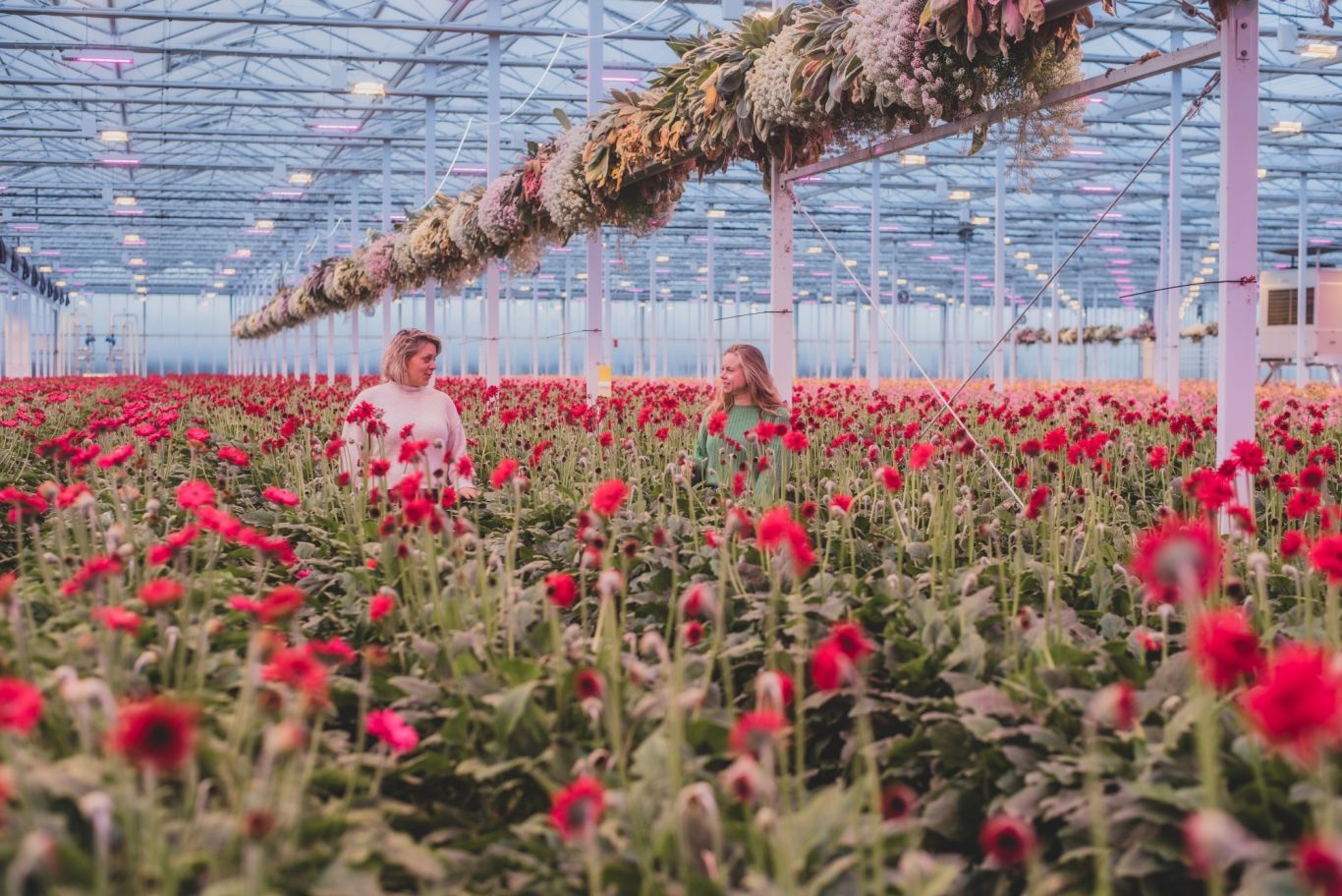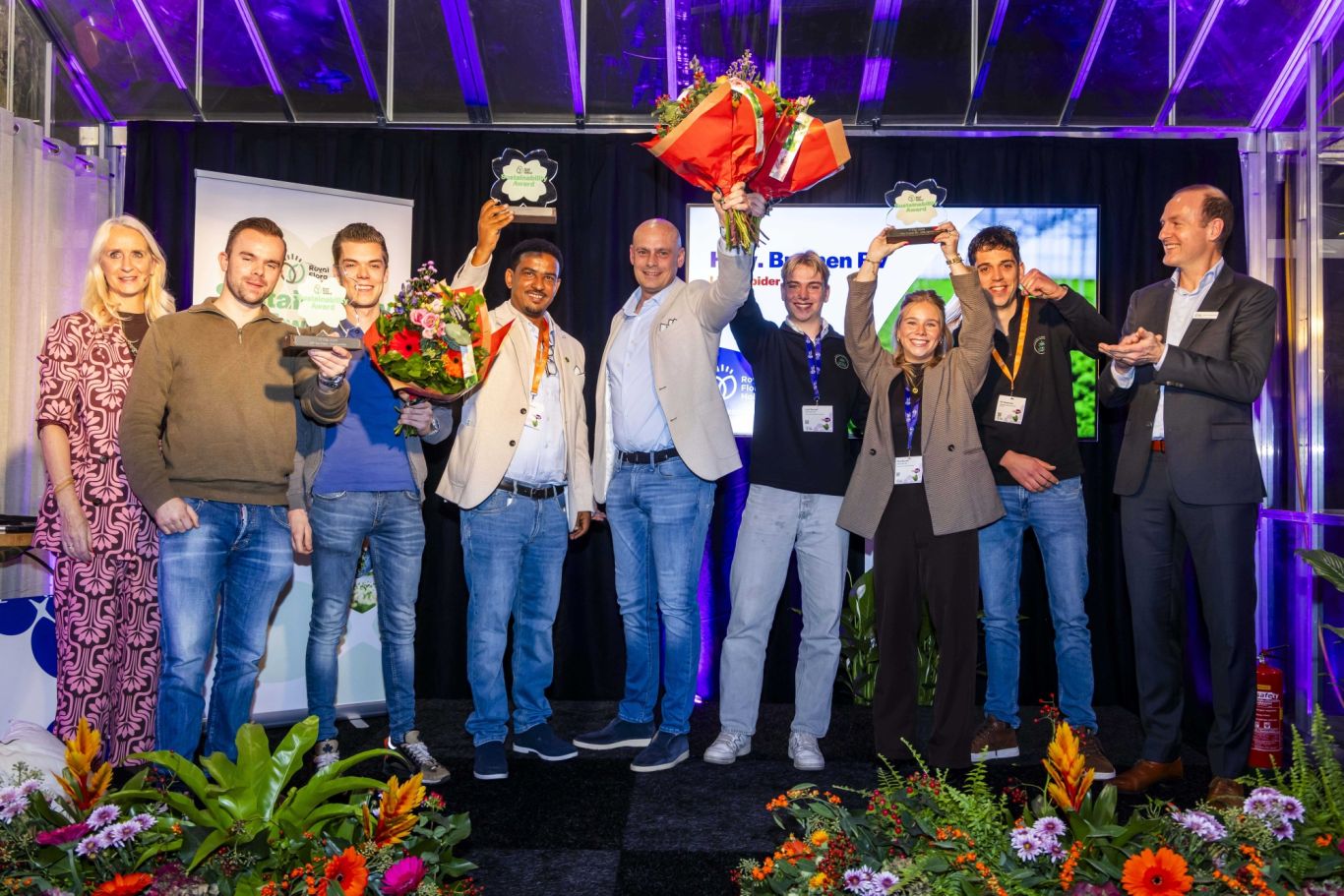More biodiversity at Trade Parc Westland: ‘We share responsibility for our planet’
June 10, 2025

Since 2020, Royal FloraHolland has been a partner in the Delta Plan for Biodiversity Recovery. Among other things, we encourage biodiversity on our sites, for example in Naaldwijk. At Trade Parc Westland (Venus and Jupiter), we joined forces with the other owners on the site and created a green strip. Peter Tack manages the site on behalf of the owners' association. ‘A falcon now lives here, an owl flies around and we see greenfinches and goldfinches. There is plenty of food for them here.’
Let's be honest: there is greenery at Trade Parc Westland, but until three years ago, asphalt and warehouses dominated the landscape. It is difficult to change that: an industrial estate is primarily for production and logistics. Nevertheless, the owners of the site felt that things could be improved. Peter: ‘As an association, we are also committed to greening. This is also about awareness and inspiration: this is what you can do with an industrial estate like this.’
Natural habitat
The province of South Holland and the municipality of Westland also recognised the importance of greening. They made subsidies available to Trade Parc Westland (TPW). Together with Royal FloraHolland, Donker Design developed a green plan, which is being rolled out step by step at the various hubs. Of course, other owners of the sites involved are also being encouraged to go green. The TPW owners' association took up the challenge.
Through Harry Brockhoff (chairman of TPW), the owners contacted Deborah Post of Honey Highway. This organisation promotes biodiversity by transforming verges, business parks and grassland into flower meadows and biodiversity parks. Trade Parc Westland (Venus and Jupiter) cleared a long, meandering strip of land. Honey Highway put together a seed mixture suitable for the soil and location of the site. Peter: ‘The idea is: you sow the mixture and mow only once a year. This allows what naturally flourishes in this habitat to remain.’
Working together
Peter recalls that there was resistance at first. Some people thought that mowing only once a year would create a messy appearance. A solution was found. Next to the section that is mowed once a year, a meandering grass path was created that is mowed every quarter. TPW also had a border planted with perennials that insects love. This way, everyone was happy. Chemical agents have been completely banned and the site is periodically cleared of weeds using brushes and boiling water. Peter: ‘The fact is that biodiversity is declining significantly, both nationally and internationally. I'm not saying that our efforts here will change the world. But every little bit helps. And that's what matters.’
In the spring breeze, chamomile, poppies, plantain and thistles now sway gently back and forth. Three years ago, employees of the companies at Trade Parc Westland helped sow the mixture. They were also each given a bag to take home to sow in their own gardens or surroundings. Peter: ‘It's great to see more birds visiting the site. That's a positive sign. But I also hope that it has an impact on the people here. That they realise: we need to let nature take its course more. We share responsibility for our planet. Every movement, no matter how small or large, always sets something in motion.’
-
Did you find this interesting?
Then share this article


